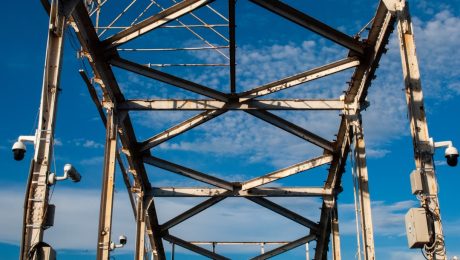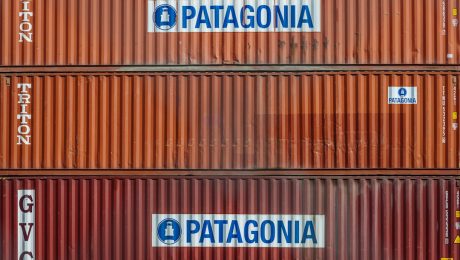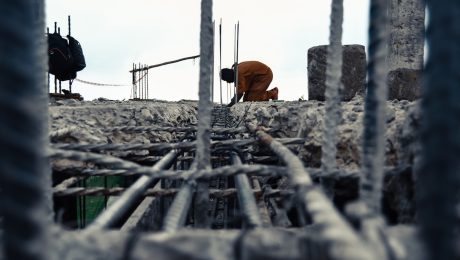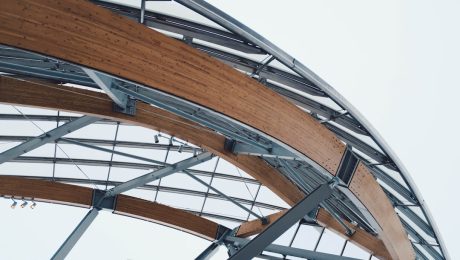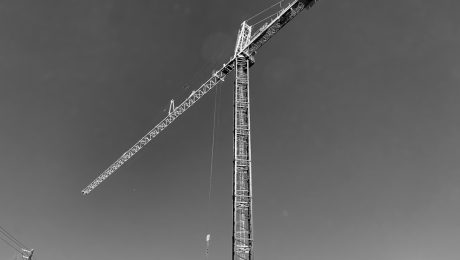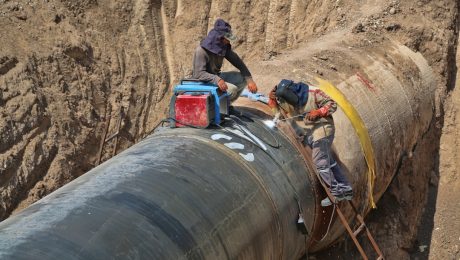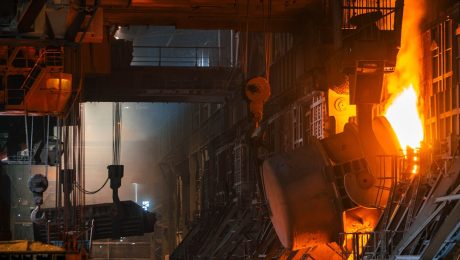Structural steel. The very words conjure images of towering skyscrapers and robust bridges, symbols of human ingenuity and engineering prowess. But beyond the impressive visuals lies a material with a multitude of advantages, making it the preferred choice for countless construction projects worldwide. This post delves deep into the compelling benefits of structural steel, exploring why it remains a cornerstone of modern construction.
Unmatched Strength and Durability: The Foundation of Steel’s Success
Perhaps the most obvious benefit of structural steel is its exceptional strength-to-weight ratio. This means that steel can support significant loads while remaining relatively lightweight compared to other materials like concrete or timber. This characteristic is crucial in high-rise buildings, long-span bridges, and other structures requiring substantial load-bearing capacity. Furthermore, steel’s inherent durability ensures longevity. Properly designed and maintained steel structures can withstand harsh weather conditions, seismic activity, and the test of time, minimizing the need for frequent repairs and replacements. The resistance to fire, though dependent on protective coatings, is another significant factor contributing to its durability and overall safety.
Flexibility and Design Versatility: Shaping the Future of Construction
Steel’s malleability allows for a wide range of design possibilities. It can be easily shaped, bent, and welded into complex geometries, enabling architects and engineers to create innovative and aesthetically pleasing structures. Unlike concrete, which is poured into forms, steel’s flexibility allows for intricate designs that would be impossible or extremely costly to achieve with other materials. This versatility extends to prefabrication, where steel components can be manufactured off-site and assembled quickly on-site, significantly reducing construction time and costs. This prefabrication also minimizes on-site disruption and waste.
Cost-Effectiveness and Time Savings: A Smart Investment in Construction
While the initial cost of steel might seem higher than some other materials, its long-term cost-effectiveness is undeniable. The speed of construction, thanks to prefabrication and the ease of assembly, translates to significant time savings. Reduced labor costs and faster project completion contribute to overall cost efficiency. Moreover, the durability of steel minimizes the need for frequent maintenance and repairs, further reducing long-term expenses. The recyclability of steel is another crucial factor contributing to its cost-effectiveness, as it reduces the environmental impact and allows for material reuse.
Sustainability and Environmental Responsibility: Building a Greener Future
Contrary to popular misconceptions, structural steel is a remarkably sustainable material. Its high recyclability rate, often exceeding 90%, significantly reduces waste and minimizes the environmental footprint of construction projects. Steel production processes are continuously improving to reduce their carbon emissions, and the use of recycled steel further contributes to environmental responsibility. Furthermore, the durability of steel structures reduces the need for frequent replacements, minimizing the ongoing environmental impact associated with material extraction and manufacturing.
Safety and Reliability: Ensuring Structural Integrity and Peace of Mind
Steel’s inherent strength and predictable behavior make it a highly reliable material for construction. Rigorous testing and quality control measures ensure the structural integrity of steel components, minimizing the risk of failure. The material’s predictable response to loads allows engineers to accurately model and analyze the structural performance of buildings and other structures, ensuring safety and reliability. Furthermore, steel’s resistance to pests and rot eliminates concerns associated with other materials, providing a safe and durable structure for generations to come. The use of fire-resistant coatings further enhances the safety aspects of steel structures in the event of a fire.
In conclusion, the benefits of structural steel are undeniable. From its exceptional strength and durability to its cost-effectiveness, design versatility, and sustainability, steel remains a cornerstone of modern construction. Its contribution to safety and reliability makes it a material of choice for projects ranging from modest buildings to towering skyscrapers and intricate bridges. Choosing structural steel is choosing a smart, sustainable, and future-proof solution.
SEO Tags: Structural Steel, Steel Construction, Steel Buildings, Sustainable Construction, Construction Materials
Expanding your business to 40+ countries is an ambitious yet achievable goal. It requires meticulous planning, a deep understanding of international trade, and a robust strategy. This guide provides a roadmap to navigate the complexities of exporting to multiple markets, maximizing your chances of success.
1. Thorough Market Research: Identifying Your Ideal Export Destinations
Before diving into the logistics, a comprehensive market analysis is paramount. Don’t approach this as a blanket strategy; treat each country individually. Consider factors like:
- Market Size and Growth Potential: Analyze the demand for your product or service in each target country. Look at population demographics, economic indicators (GDP growth, disposable income), and industry-specific reports.
- Competitive Landscape: Identify your key competitors in each market. Assess their strengths and weaknesses, pricing strategies, and market share. This will inform your competitive positioning.
- Regulatory Environment: Understand the import regulations, tariffs, and trade barriers specific to each country. This includes customs duties, labeling requirements, and product standards.
- Cultural Nuances: Consider cultural differences in consumer preferences, purchasing behavior, and communication styles. Tailor your marketing and sales strategies accordingly.
- Infrastructure and Logistics: Evaluate the efficiency of transportation networks, warehousing facilities, and customs procedures in each target market. This will impact your supply chain and delivery times.
Tools like market research databases (e.g., Statista, Euromonitor), industry associations, and government trade agencies can provide valuable data.
2. Legal and Regulatory Compliance: Navigating International Trade Laws
Exporting to multiple countries means navigating a complex web of international laws and regulations. Failure to comply can result in significant penalties and legal repercussions. Key areas to focus on include:
- Export Controls and Sanctions: Ensure your products are not subject to export controls or sanctions imposed by your country or the destination countries.
- Customs Regulations: Understand the specific customs procedures, documentation requirements (e.g., commercial invoices, packing lists, certificates of origin), and tariff classifications for each country.
- Product Standards and Certifications: Many countries have specific product standards and certifications that must be met before your products can be imported. This may involve obtaining certifications like ISO, CE, or others.
- Intellectual Property Protection: Protect your trademarks, patents, and copyrights in each target market to prevent infringement.
- Data Privacy Regulations: Comply with data privacy laws (e.g., GDPR in Europe, CCPA in California) if you collect and process customer data.
Seek legal counsel specializing in international trade law to ensure compliance.
3. International Logistics and Supply Chain Management: Efficient Global Distribution
Efficiently managing your supply chain is crucial when exporting to multiple countries. Consider the following:
- Choosing the Right Shipping Methods: Select the most cost-effective and reliable shipping methods based on factors like product type, delivery time requirements, and budget. Options include sea freight, air freight, and courier services.
- Inventory Management: Implement an inventory management system to track stock levels, optimize warehouse space, and minimize storage costs across different locations.
- International Payment Methods: Establish secure and efficient payment methods for international transactions, such as letters of credit, bank transfers, or online payment gateways.
- Customs Brokerage: Consider using a customs broker to handle customs clearance procedures, reducing the administrative burden and ensuring smooth import processes.
- Distribution Network: Establish a robust distribution network in each target market, potentially through partnerships with local distributors or establishing your own warehousing and logistics infrastructure.
4. Marketing and Sales Strategies: Adapting to Diverse Markets
Your marketing and sales strategies must be tailored to the specific cultural and consumer preferences of each target market. This involves:
- Localized Marketing Materials: Translate your marketing materials into the local languages and adapt your messaging to resonate with the local culture.
- Digital Marketing Strategies: Utilize digital marketing channels like social media, search engine optimization (SEO), and online advertising to reach your target audience in each country.
- Sales Channels: Identify appropriate sales channels for each market, such as online marketplaces, distributors, retailers, or direct sales.
- Pricing Strategies: Develop pricing strategies that are competitive in each market, taking into account local costs, currency fluctuations, and consumer purchasing power.
- Customer Service: Provide excellent customer service in the local language to build trust and loyalty.
5. Financial Management and Risk Mitigation: Protecting Your Investment
Exporting to multiple countries involves significant financial risks. Effective financial management is crucial to mitigate these risks:
- Currency Risk Management: Implement strategies to manage currency fluctuations that can impact your profitability.
- Credit Risk Management: Assess the creditworthiness of your international customers and implement strategies to minimize bad debt.
- Insurance: Obtain appropriate insurance coverage to protect against risks such as political instability, shipment damage, and non-payment.
- Financial Forecasting: Develop accurate financial forecasts to manage cash flow and allocate resources effectively.
- Tax Planning: Understand the tax implications of exporting to multiple countries and implement strategies to optimize your tax burden.
Exporting to 40+ countries is a challenging but potentially highly rewarding undertaking. By carefully planning and executing each stage of this process, you significantly increase your chances of success and establish a strong global presence.
SEO Tags:
export strategy, international trade, global market expansion, multi-country exporting, international business
body {
font-family: sans-serif;
line-height: 1.6;
}
h1, h2, h3 {
color: #333;
}
h1 {
font-size: 2.5em;
}
h2 {
font-size: 2em;
}
h3 {
font-size: 1.5em;
}
Choosing between concrete and steel for a construction project is a crucial decision, impacting cost, durability, aesthetics, and the overall structural integrity. Both materials have unique properties and are often used in conjunction, but understanding their individual strengths and weaknesses is paramount for informed decision-making. This comprehensive guide will delve into the key differences, helping you understand which material is best suited for your specific needs.
Strength and Durability: A Head-to-Head Comparison
Concrete, a composite material of cement, aggregates, and water, boasts exceptional compressive strength, meaning it excels at resisting squeezing forces. This makes it ideal for foundations, columns, and walls. However, its tensile strength (resistance to pulling forces) is significantly lower. Steel, on the other hand, possesses remarkable tensile strength, far surpassing concrete. It’s incredibly strong in both tension and compression, making it perfect for beams, girders, and frameworks where bending and pulling forces are prevalent. While steel can rust and corrode, advancements in protective coatings and galvanization have significantly extended its lifespan. Concrete, while durable, can crack under extreme stress and is susceptible to damage from freeze-thaw cycles if not properly mixed and cured.
Cost Analysis: Weighing the Economic Factors
The cost of concrete and steel varies depending on location, market conditions, and the specific grade of material. Generally, concrete is considered less expensive than steel on a per-unit-volume basis. However, the cost of forming and placing concrete can be substantial, especially for complex structures. Steel fabrication and erection also involve significant labor costs, but the overall material cost might be higher depending on the quantity needed. Transportation costs also play a role, as steel is usually transported in longer lengths requiring specialized equipment. The ultimate cost-effectiveness depends on the project’s scale, design, and the specific material requirements.
Flexibility and Design Possibilities: Shaping the Structure
Steel’s flexibility allows for more intricate and complex designs. Its high tensile strength enables the creation of long spans and slender structures, making it a popular choice for skyscrapers, bridges, and large industrial buildings. Concrete, while less flexible, offers considerable design freedom, especially with the use of precast concrete elements. Precast concrete components can be manufactured off-site, improving efficiency and reducing on-site construction time. However, the design options for concrete are generally more limited by its lower tensile strength and the need for substantial supports.
Environmental Impact: A Sustainable Choice?
Both concrete and steel production have significant environmental impacts. Cement production, a major component of concrete, is a significant source of carbon dioxide emissions. Steel production also contributes to greenhouse gas emissions through the energy-intensive processes involved. However, both materials are recyclable, and advancements in sustainable construction practices are aiming to reduce their environmental footprint. Using recycled aggregates in concrete and employing more efficient steel production methods are key steps in mitigating the environmental impact of these materials. Life cycle assessments are increasingly used to compare the overall environmental performance of different construction materials.
Maintenance and Lifespan: Long-Term Considerations
The maintenance requirements for concrete and steel differ significantly. Concrete generally requires less maintenance, though regular inspections are necessary to identify and repair any cracks or damage. Steel, on the other hand, requires protection against corrosion. This often involves protective coatings, galvanization, or other anti-corrosion treatments. The lifespan of both materials can be extended significantly with proper maintenance and design considerations. For instance, using durable coatings on steel and incorporating expansion joints in concrete structures can help prevent damage and extend their service life. Regular inspections and timely repairs are essential for both materials to ensure structural integrity and safety.
In conclusion, the choice between concrete and steel depends heavily on the specific project requirements. Each material offers unique advantages and disadvantages, and often, the most effective approach involves a hybrid design that leverages the strengths of both materials. Careful consideration of factors like strength, cost, design flexibility, environmental impact, and maintenance needs is crucial for making an informed decision that ensures the successful completion of any construction project.
SEO-Friendly Tags:
- Concrete construction
- Steel construction
- Concrete vs steel
- Construction materials
- Structural engineering
In today’s world, noise pollution is a significant concern, impacting productivity, health, and overall well-being. Whether it’s in industrial settings, busy offices, or residential spaces, effective noise control is paramount. Acoustic steel profile systems offer a robust and reliable solution for managing sound transmission, creating quieter and more comfortable environments. This comprehensive guide delves into the intricacies of these systems, exploring their design, applications, and benefits.
Understanding the Mechanics of Acoustic Steel Profile Systems
Acoustic steel profile systems are engineered structures designed to minimize the transmission of airborne and structure-borne sound. Unlike traditional methods relying on dense materials alone, these systems utilize a combination of strategically designed steel profiles, vibration damping materials, and sound-absorbing components. The steel profiles provide a robust framework, while the damping materials reduce vibrational energy, preventing sound from traveling through the structure. Sound-absorbing materials, often placed within the cavity created by the profiles, further mitigate sound reflection and absorption.
The effectiveness of these systems hinges on several key factors: the profile’s design (including its weight, geometry, and material properties), the type and thickness of damping materials used, and the overall system’s airtightness. Proper installation is crucial, as gaps or leaks can significantly compromise performance.
Diverse Applications: Where Acoustic Steel Profile Systems Excel
The versatility of acoustic steel profile systems makes them suitable for a wide range of applications. Their robust nature and excellent sound-dampening capabilities make them ideal for:
- Industrial settings: Mitigating noise from machinery and equipment in factories, workshops, and power plants.
- Commercial buildings: Creating quieter office spaces, reducing noise transfer between rooms, and improving speech privacy in open-plan layouts.
- Residential constructions: Increasing sound insulation between apartments, reducing noise intrusion from external sources, and enhancing the overall acoustic comfort of homes.
- Recording studios and theaters: Providing superior sound isolation and minimizing unwanted reverberation.
- Transportation infrastructure: Reducing noise pollution from railways and highways through the construction of noise barriers.
Design Considerations: Optimizing Acoustic Performance
The design of an acoustic steel profile system is a crucial step in ensuring optimal performance. Several factors need careful consideration:
- Frequency range: The system’s design must account for the specific frequency range of the noise being controlled. Different frequencies require different solutions.
- Sound transmission class (STC) ratings: STC ratings provide a quantitative measure of a system’s ability to block sound. The desired STC rating will depend on the specific application and the required level of noise reduction.
- Material selection: Choosing appropriate steel profiles, damping materials, and sound-absorbing materials is critical for achieving the desired acoustic performance. The density, thickness, and stiffness of each component play a vital role.
- System integration: The system must be seamlessly integrated with the existing building structure to ensure proper functionality and prevent sound leakage.
Installation Techniques: Ensuring Effective Sound Control
Proper installation is just as crucial as the design of the acoustic steel profile system. Any gaps or imperfections can significantly compromise its effectiveness. Key aspects of installation include:
- Precise measurements and planning: Accurate measurements are essential to ensure a perfect fit and avoid any gaps.
- Careful assembly: The steel profiles must be assembled precisely according to the manufacturer’s instructions.
- Proper sealing: All joints and seams must be carefully sealed to prevent sound leakage.
- Quality control: Regular inspections throughout the installation process are crucial to ensure that the system is installed correctly and meets the required specifications.
Benefits Beyond Noise Reduction: The Advantages of Acoustic Steel Profile Systems
Beyond their primary function of noise control, acoustic steel profile systems offer several additional benefits:
- Durability and longevity: Steel is a robust material, ensuring the system’s long-term performance and resistance to damage.
- Fire resistance: Steel profiles offer inherent fire resistance, contributing to overall building safety.
- Design flexibility: These systems can be adapted to fit various architectural designs and building layouts.
- Sustainability: Steel is a recyclable material, making these systems environmentally friendly.
- Cost-effectiveness: While the initial investment may be higher than some alternative solutions, the long-term cost savings from reduced noise pollution and improved energy efficiency can be significant.
In conclusion, acoustic steel profile systems represent a sophisticated and effective approach to noise control. By understanding their mechanics, applications, design considerations, and installation techniques, architects, engineers, and contractors can harness their potential to create quieter, more comfortable, and productive environments. The long-term benefits of investing in these systems far outweigh the initial costs, making them a worthwhile investment for a wide range of applications.
Tags: acoustic steel profiles, noise control, soundproofing, steel profile systems, acoustic design, building acoustics
body { font-family: sans-serif; line-height: 1.6; }
h1, h2, h3 { color: #333; }
img { max-width: 100%; height: auto; }
The burgeoning wind energy sector relies heavily on robust and reliable materials to withstand the harsh conditions of its operational environment. Steel profiles, in their diverse forms, play a pivotal role in the construction and functionality of wind turbines, from the towering tower to the intricate nacelle and blades. This post delves deep into the world of steel profiles in wind energy projects, examining their applications, manufacturing processes, advantages, challenges, and the future trends shaping their use.
1. Diverse Applications of Steel Profiles in Wind Turbines
Steel profiles aren’t a one-size-fits-all solution; their versatility allows them to serve various crucial functions within a wind turbine. Let’s explore some key applications:
- Tower Construction: The tower, the most visible component, is typically fabricated from tubular steel profiles or welded sections. These profiles need to withstand immense bending moments and compressive forces from wind loads and the turbine’s own weight. The choice of profile type depends on factors such as tower height, turbine capacity, and site-specific wind conditions. High-strength low-alloy (HSLA) steels are often preferred for their superior strength-to-weight ratio.
- Nacelle Frame: The nacelle houses the gearbox, generator, and other critical components. Steel profiles form the structural frame of the nacelle, providing a rigid and stable platform for these components. The design requires careful consideration of vibration damping and fatigue resistance, given the constant rotational forces and wind-induced vibrations.
- Blade Support Structures: While blades themselves are often made from composite materials, steel profiles are integral to their support structures, ensuring safe and efficient operation. These structures need to withstand significant loads during operation and potentially high stresses during extreme weather events.
- Internal Bracing and Reinforcement: Steel profiles are used extensively for internal bracing within the tower and nacelle, enhancing structural integrity and preventing buckling under stress. These internal elements significantly contribute to the overall strength and stability of the turbine.
2. Manufacturing Processes for Wind Turbine Steel Profiles
The manufacturing of steel profiles for wind energy applications demands high precision and quality control. Common processes include:
- Hot Rolling: This is a primary process for creating the basic shapes of steel profiles. Molten steel is passed through rollers at high temperatures, shaping it into the desired cross-section.
- Cold Forming: This process refines the shapes produced through hot rolling, improving dimensional accuracy and surface finish. It’s often used to create more complex profile geometries.
- Welding: Welding plays a crucial role in joining individual steel profiles to create larger structural components, such as tower sections or nacelle frames. Advanced welding techniques, like robotic welding, ensure high-quality and consistent welds.
- Heat Treatment: Heat treatment processes are applied to enhance the mechanical properties of the steel profiles, increasing their strength, hardness, and fatigue resistance. This is particularly important for components subjected to high stresses.
- Surface Treatments: Coatings, such as galvanizing or painting, are applied to protect the steel profiles from corrosion, extending their lifespan and minimizing maintenance requirements.
3. Advantages of Using Steel Profiles in Wind Energy
The widespread adoption of steel profiles in wind energy is driven by several key advantages:
- High Strength-to-Weight Ratio: Steel offers excellent strength relative to its weight, making it ideal for constructing tall, slender wind turbine towers that can withstand significant wind loads without excessive material.
- Durability and Longevity: With proper surface treatments, steel profiles exhibit excellent resistance to corrosion and weathering, ensuring long-term performance in harsh outdoor environments.
- Cost-Effectiveness: Steel is a relatively inexpensive material, contributing to the overall cost-competitiveness of wind energy projects.
- Recyclability: Steel is fully recyclable, contributing to the environmental sustainability of wind energy.
- Design Flexibility: Steel profiles can be manufactured in a wide variety of shapes and sizes, allowing for flexible design solutions to meet specific project requirements.
4. Challenges and Considerations in Using Steel Profiles
Despite the advantages, using steel profiles in wind energy also presents some challenges:
- Corrosion: Even with protective coatings, corrosion remains a potential issue, especially in coastal or highly humid environments. Regular inspection and maintenance are crucial.
- Fatigue: Cyclic loading from wind forces can lead to fatigue failure over time. Careful design and material selection are essential to mitigate this risk.
- Transportation and Logistics: Transporting large steel profiles to remote wind farm locations can be logistically challenging and expensive.
- Manufacturing Complexity: Creating complex steel profiles for specialized applications can require advanced manufacturing techniques and precise quality control.
- Weight: While steel’s high strength-to-weight ratio is advantageous, the weight of steel components can still pose challenges during transportation and erection.
5. Future Trends in Steel Profile Usage for Wind Energy
The future of steel profiles in wind energy is characterized by innovation and optimization:
- Advanced Steel Grades: The development of even stronger and more durable steel grades with enhanced fatigue resistance will further improve turbine performance and lifespan.
- Optimized Designs: Computational fluid dynamics (CFD) and finite element analysis (FEA) are being used to optimize steel profile designs, reducing weight and maximizing strength.
- Prefabrication and Modularization: Increased prefabrication and modularization of steel components will streamline construction and reduce on-site assembly time.
- Sustainable Manufacturing Practices: The industry is increasingly focusing on sustainable manufacturing practices to minimize the environmental impact of steel production.
- Integration with Other Materials: Combining steel profiles with other materials, such as composites, may lead to lighter and more efficient turbine designs.
In conclusion, steel profiles are indispensable components in the construction of wind turbines. Their versatility, strength, and cost-effectiveness make them a crucial element in the continued growth of the renewable energy sector. Addressing the challenges associated with their use through innovation and optimization will ensure their continued importance in the future of wind energy.
SEO Tags:
Steel profiles, wind turbine, wind energy, renewable energy, steel construction
The construction industry is undergoing a significant transformation, driven by the need for sustainable, efficient, and cost-effective building solutions. Hybrid construction, a revolutionary approach combining traditional building methods with modern materials and technologies, is at the forefront of this change. This innovative approach offers a unique blend of strengths, allowing for greater design flexibility, improved sustainability, and enhanced performance.
Understanding the Core Principles of Hybrid Construction
Hybrid construction isn’t simply about mixing materials; it’s a strategic approach that leverages the best qualities of different building systems. It involves integrating elements like timber frames with concrete or steel components, using prefabricated modules alongside on-site construction, or combining traditional masonry with modern insulation techniques. The key is to optimize the performance of each material and technique to achieve a superior overall outcome. This approach allows for customization, adaptability to various project needs and site conditions, and the exploitation of the advantages of each construction method.
Exploring Different Hybrid Construction Methods
The possibilities within hybrid construction are vast. Some popular methods include:
- Timber-Concrete Hybrids: This approach often involves using a timber frame for the main structure, offering speed and sustainability, with concrete elements incorporated for enhanced fire resistance, sound insulation, and load-bearing capacity in specific areas. This combination balances the lightness and renewable nature of timber with the strength and durability of concrete.
- Steel-Timber Hybrids: Steel’s high strength-to-weight ratio is combined with the sustainable and aesthetically pleasing qualities of timber. Steel can provide structural support for larger spans or heavier loads, while timber can be used for infill walls, flooring, or cladding. This hybrid offers a powerful balance of strength and sustainability.
- Masonry-Steel Hybrids: Traditional masonry techniques, valued for their durability and thermal mass, can be enhanced by incorporating steel elements for structural support or reinforcement. This combination maintains the aesthetic appeal of masonry while improving structural integrity and seismic resistance.
- Prefabricated Modular and On-site Construction: This approach combines the efficiency of prefabricated modules built off-site with traditional on-site construction for customized elements. This accelerates the building process, reduces waste, and allows for greater control over quality.
Benefits of Embracing Hybrid Construction Techniques
The advantages of hybrid construction are compelling:
- Increased Sustainability: By incorporating sustainable materials like timber and utilizing efficient construction methods, hybrid projects contribute to reduced carbon footprints and environmental impact.
- Enhanced Structural Performance: Combining materials with complementary properties leads to structures that are stronger, more durable, and better able to withstand various environmental stresses.
- Cost-Effectiveness: While initial investment might vary, the optimized use of materials and streamlined construction processes can often result in long-term cost savings.
- Improved Design Flexibility: Hybrid approaches unlock new possibilities for architectural design, enabling the creation of more innovative and aesthetically pleasing buildings.
- Faster Construction Times: The integration of prefabrication and optimized construction methods often leads to significantly reduced project timelines.
Challenges and Considerations in Hybrid Construction
Despite the numerous advantages, implementing hybrid construction presents some challenges:
- Material Compatibility: Careful consideration must be given to ensure the compatibility of different materials and their interaction within the structure.
- Design Complexity: Hybrid projects often require more sophisticated design and engineering expertise to manage the integration of various systems.
- Skilled Workforce: A skilled workforce capable of handling diverse materials and construction methods is essential for successful implementation.
- Regulatory Compliance: Meeting building codes and regulations for hybrid structures may require specialized knowledge and approvals.
The Future of Hybrid Construction: Trends and Innovations
The future of hybrid construction is bright, with ongoing research and development focusing on:
- Advanced Materials: The incorporation of innovative materials like bio-based composites and high-performance concrete will further enhance sustainability and performance.
- Digitalization and BIM: Building Information Modeling (BIM) will play an increasingly crucial role in optimizing design, construction, and management of hybrid projects.
- Sustainable Practices: Emphasis on circular economy principles and the use of recycled and reclaimed materials will become more prominent.
- Automation and Robotics: Automation and robotics will improve efficiency and precision in the construction process, particularly for prefabrication.
Hybrid construction is not just a trend; it’s a paradigm shift in how we design and build. By embracing this innovative approach, the construction industry can create more sustainable, efficient, and resilient structures for the future.
Tags: Hybrid Construction, Sustainable Building, Green Construction, Prefabricated Construction, Modular Construction
Energy projects rely heavily on efficient and reliable pipeline infrastructure. The selection of the right pipe is paramount, impacting not only project cost and timeline but also safety, environmental impact, and long-term performance. This comprehensive guide delves into the crucial factors to consider when choosing pipes for your energy project.
1. Material Matters: Selecting the Right Pipe Material
The choice of pipe material is fundamental. Different materials offer varying properties in terms of strength, corrosion resistance, temperature tolerance, and cost. Common materials include:
- Steel: A workhorse in the energy industry, steel pipes offer high strength and durability. They’re suitable for high-pressure applications and can withstand harsh environmental conditions. However, they are susceptible to corrosion and require protective coatings or linings, often made of epoxy or polyethylene.
- High-Density Polyethylene (HDPE): HDPE pipes are lightweight, flexible, and highly resistant to corrosion. They are increasingly popular for low-pressure applications, particularly in natural gas distribution networks. Their flexibility allows for easier installation in challenging terrains.
- Polyvinyl Chloride (PVC): PVC pipes are cost-effective and resistant to corrosion, making them suitable for certain applications, especially in water transmission. However, their temperature and pressure limitations restrict their use in high-pressure energy projects.
- Fiber Reinforced Polymers (FRP): FRP pipes combine the strength of fiberglass with the corrosion resistance of polymers. They are lightweight and offer good chemical resistance, making them suitable for specific applications where corrosion is a major concern.
The selection of the optimal material depends on factors like the transported fluid (oil, gas, water), pressure requirements, temperature fluctuations, soil conditions, and project budget.
2. Pressure’s On: Understanding Pressure Ratings and Safety
Pipelines operate under various pressure levels, depending on the transported fluid and the distance it needs to travel. The pipe’s pressure rating, typically expressed in pounds per square inch (PSI) or bars, must be significantly higher than the expected operating pressure to ensure safety and prevent failures. Factors influencing pressure rating include:
- Fluid type and density: The density and viscosity of the transported fluid influence the pressure exerted on the pipe walls.
- Pipeline length and elevation changes: Longer pipelines and significant elevation changes require higher pressure ratings to overcome frictional losses and gravitational forces.
- Temperature variations: Temperature fluctuations can affect the pipe’s material properties and influence pressure behavior.
Accurate pressure calculations and the selection of pipes with appropriate safety factors are crucial to prevent leaks, ruptures, and potential environmental disasters. Regular inspections and maintenance are also essential to maintain pipeline integrity.
3. Sizing Up: Determining the Right Pipe Diameter
Pipe diameter directly impacts flow rate and velocity. An incorrectly sized pipe can lead to inefficiencies and increased energy consumption. The optimal diameter is determined through hydraulic calculations, considering factors like:
- Desired flow rate: The volume of fluid that needs to be transported per unit time dictates the required pipe size.
- Fluid viscosity: Higher viscosity fluids require larger diameters to maintain adequate flow velocity.
- Pipeline length and roughness: Longer pipelines and rougher pipe interiors increase frictional losses, requiring larger diameters to compensate.
- Pressure drop: The acceptable pressure drop along the pipeline determines the appropriate diameter.
Computer-aided design (CAD) software and specialized hydraulic modeling tools are often employed to optimize pipe diameter selection and minimize energy losses.
4. Environmental Considerations: Minimizing the Footprint
Environmental concerns play a significant role in pipeline project planning and execution. Pipe selection should consider the potential environmental impacts, including:
- Material sourcing and manufacturing: Choosing materials with lower embodied carbon and minimizing the environmental impact of manufacturing processes is essential.
- Corrosion and leakage: Preventing corrosion and leaks reduces the risk of soil and water contamination. The choice of pipe material and protective coatings is vital in this regard.
- Right-of-way impact: Minimizing the land area required for the pipeline reduces habitat disruption and land-use conflicts.
- Pipeline decommissioning: Planning for pipeline decommissioning and responsible disposal of materials at the end of the pipeline’s life cycle is crucial.
Environmental impact assessments (EIAs) are often required to evaluate the potential environmental consequences of pipeline projects and inform the selection of environmentally friendly materials and construction methods.
5. Cost Optimization: Balancing Performance and Budget
While performance and safety are paramount, cost is always a critical factor in energy project planning. Pipe selection involves finding the optimal balance between performance requirements and budget constraints. Considerations include:
- Initial material costs: Different pipe materials have different price points.
- Installation costs: Factors such as pipe weight, flexibility, and required equipment influence installation costs.
- Maintenance and repair costs: Materials with higher durability and corrosion resistance may reduce long-term maintenance costs.
- Life cycle costs: A holistic approach that considers all costs over the pipeline’s lifespan is crucial for informed decision-making.
Life cycle cost analysis (LCCA) helps to compare different pipe options based on their total cost over their operational lifespan, facilitating informed decisions that balance performance, safety, and economic viability.
Choosing the right pipe for an energy project is a complex decision requiring careful consideration of numerous factors. By meticulously evaluating material properties, pressure requirements, diameter considerations, environmental impacts, and cost implications, project engineers can ensure the selection of a pipeline system that is safe, reliable, efficient, and environmentally responsible.
SEO Tags:
- Energy Pipelines
- Pipe Material Selection
- Pipeline Design Considerations
- Pipeline Pressure Rating
- Environmental Impact of Pipelines
The steel industry is a cornerstone of global infrastructure, but its traditional production methods have significant environmental consequences. Creating sustainable steel supply chains is no longer a niche concern; it’s a necessity for a thriving and environmentally responsible future. This post delves into the key aspects of building a more sustainable steel industry, examining the challenges and opportunities along the way.
1. Responsible Raw Material Sourcing: The Foundation of Sustainable Steel
The journey towards sustainable steel begins with responsible sourcing of raw materials. Iron ore mining, a crucial step in steel production, often involves significant environmental impacts, including deforestation, habitat destruction, and water pollution. Sustainable practices require a shift towards:
- Minimizing mining’s environmental footprint: Implementing stricter regulations and best practices to reduce land disturbance, water consumption, and greenhouse gas emissions during mining operations.
- Promoting responsible mining certifications: Utilizing certifications like the Responsible Minerals Initiative (RMI) to ensure ethical and environmentally sound sourcing of raw materials.
- Exploring alternative raw materials: Investigating the use of recycled steel scrap and other secondary materials to reduce reliance on virgin iron ore and minimize mining’s impact.
- Optimizing transportation: Reducing the distance materials travel through efficient logistics and the use of alternative transportation methods to minimize carbon emissions.
2. Energy Efficiency and Carbon Footprint Reduction in Steel Production
Steel production is an energy-intensive process, contributing significantly to global greenhouse gas emissions. Reducing the carbon footprint requires a multi-pronged approach:
- Transitioning to renewable energy sources: Replacing fossil fuels with renewable energy sources like solar, wind, and hydro power to electrify steel mills and reduce reliance on coal.
- Implementing energy-efficient technologies: Investing in advanced technologies to optimize energy consumption throughout the steelmaking process, including electric arc furnaces (EAFs) which offer significantly lower carbon emissions compared to traditional blast furnaces.
- Carbon Capture, Utilization, and Storage (CCUS): Exploring and implementing CCUS technologies to capture CO2 emissions from steel plants and either store them underground or utilize them in other industrial processes.
- Process optimization: Continuously improving production processes to minimize energy waste and optimize resource utilization.
3. Embracing the Circular Economy: Recycling and Waste Management in Steel
The circular economy model emphasizes reducing waste and maximizing resource utilization. For the steel industry, this translates to:
- Increasing steel recycling rates: Developing robust infrastructure for collecting and processing steel scrap, incentivizing recycling, and improving the quality of recycled steel.
- Designing for recyclability: Creating steel products that are easily disassembled and recycled at the end of their life cycle, minimizing material loss and contamination.
- Waste reduction and management: Implementing strategies to minimize waste generation throughout the steel production process and effectively managing any remaining waste in an environmentally responsible manner.
- Developing innovative recycling technologies: Investing in research and development of new technologies to improve the efficiency and effectiveness of steel recycling.
4. Supply Chain Transparency and Traceability: Ensuring Responsible Practices
Transparency and traceability are crucial for ensuring responsible practices throughout the steel supply chain. This involves:
- Implementing robust tracking systems: Utilizing blockchain technology or other digital tools to track the origin and journey of steel materials, ensuring transparency and accountability.
- Developing industry standards and certifications: Establishing clear industry standards for sustainable steel production and implementing certification schemes to verify compliance.
- Promoting collaboration and information sharing: Encouraging collaboration among stakeholders in the steel supply chain to share best practices and promote transparency.
- Regular audits and assessments: Conducting regular audits and assessments to ensure compliance with sustainability standards and identify areas for improvement.
5. Stakeholder Engagement and Collaboration: A Shared Responsibility
Building truly sustainable steel supply chains requires collaboration and engagement across the entire value chain. This includes:
- Engaging with suppliers and customers: Working with suppliers to promote sustainable practices and collaborating with customers to design and produce more sustainable steel products.
- Collaborating with governments and NGOs: Working with governments to develop supportive policies and regulations and partnering with NGOs to promote awareness and advocate for change.
- Investing in research and development: Continuously investing in research and development to explore and implement new sustainable technologies and practices.
- Promoting education and awareness: Educating stakeholders about the importance of sustainable steel and raising awareness of the environmental and social impacts of the steel industry.
Creating sustainable steel supply chains is a complex but necessary undertaking. By embracing responsible sourcing, energy efficiency, circular economy principles, transparency, and collaboration, the steel industry can forge a greener future for itself and the planet.
Tags: Sustainable Steel, Green Steel, Steel Recycling, Circular Economy Steel, Responsible Sourcing Steel
The global steel market is a complex and dynamic beast, characterized by significant price fluctuations influenced by a multitude of factors. Understanding these intricacies is crucial for businesses involved in steel production, processing, and consumption. This in-depth analysis explores the key drivers of global steel prices, examining current trends and offering insights into potential future scenarios.
Raw Material Costs: The Foundation of Steel Pricing
The price of steel is fundamentally linked to the cost of its raw materials, primarily iron ore and coking coal. Fluctuations in the prices of these commodities directly impact the production cost of steel, leading to corresponding price adjustments in the market. Iron ore prices are heavily influenced by supply and demand dynamics in major producing countries like Australia and Brazil. Similarly, coking coal prices are susceptible to geopolitical events, environmental regulations, and production capacity in countries like Australia and China. A surge in iron ore or coking coal prices inevitably translates into higher steel prices, impacting downstream industries reliant on steel as a key input.
Furthermore, the transportation costs associated with moving these raw materials significantly impact the final price of steel. Global shipping rates, fuel prices, and logistical bottlenecks can all contribute to increased production costs and, consequently, higher steel prices. Monitoring these transportation costs is crucial for accurate forecasting of steel price movements.
Global Demand & Supply Dynamics: A Balancing Act
The interplay of global supply and demand is a major determinant of steel prices. Strong economic growth in major steel-consuming regions like China, India, and the United States typically translates into increased steel demand, pushing prices upward. Conversely, economic slowdowns or recessions can lead to decreased demand, causing prices to fall. This relationship is not always linear, however, as other factors, such as inventory levels and production capacity, can influence the market’s response to changes in demand.
Supply-side factors are equally important. Production disruptions due to natural disasters, geopolitical instability, or plant closures can lead to supply shortages and price increases. Conversely, increased steel production capacity, particularly in emerging economies, can put downward pressure on prices. The balance between global supply and demand is a constantly shifting dynamic that requires careful monitoring.
Regional Variations in Steel Prices: A Geographic Perspective
Steel prices are not uniform across the globe. Regional variations exist due to factors such as local demand, transportation costs, import tariffs, and government policies. For example, steel prices in China, the world’s largest steel producer, often influence global prices but may not always directly correlate with prices in other regions. Similarly, steel prices in North America or Europe can be influenced by local market conditions, import duties, and the strength of their respective currencies.
Understanding these regional differences is crucial for businesses operating in international markets. A thorough analysis of regional factors is necessary for effective pricing strategies and risk management.
Government Policies & Regulations: Shaping the Steel Landscape
Government policies and regulations play a significant role in shaping the global steel market. Anti-dumping duties, import tariffs, and environmental regulations can all impact steel prices. For instance, governments might impose tariffs to protect domestic steel producers from foreign competition, leading to higher prices for consumers. Similarly, stricter environmental regulations can increase production costs, contributing to higher steel prices.
Government subsidies to steel producers can also influence the market, potentially leading to increased production and lower prices. Analyzing the impact of government policies and regulations is essential for understanding the long-term trajectory of steel prices.
Future Predictions & Market Outlook: Navigating Uncertainty
Predicting future steel prices is inherently challenging due to the multitude of factors influencing the market. However, by analyzing current trends and considering potential future scenarios, we can formulate informed predictions. Factors to consider include projected economic growth in key steel-consuming regions, the ongoing expansion of steel production capacity in developing countries, the impact of technological advancements in steel production, and the evolving landscape of environmental regulations.
While specific price predictions are speculative, a reasonable outlook considers the potential for continued price volatility. The interplay of global economic conditions, raw material costs, and geopolitical events will continue to shape the steel market. Businesses need to adopt a flexible and adaptable approach to navigate this inherent uncertainty.
This analysis provides a comprehensive overview of the factors influencing global steel prices. While predicting the future remains challenging, understanding these dynamics is crucial for informed decision-making in the steel industry and related sectors.
Selecting the right pipe is paramount to the success of any energy project. From oil and gas pipelines to renewable energy infrastructure, the choice of pipe material, diameter, and pressure rating directly impacts safety, efficiency, and the overall project’s lifespan and profitability. This comprehensive guide will delve into the crucial factors to consider when making this critical decision.
1. Understanding Material Properties: The Foundation of Pipe Selection
The choice of pipe material is the cornerstone of successful pipeline design. Different materials offer varying properties concerning strength, corrosion resistance, temperature tolerance, and cost. Common materials include:
- Steel: The workhorse of the pipeline industry, offering high strength and durability. Various grades of steel exist, each suited for different pressures and environments. Carbon steel is common for lower-pressure applications, while high-strength low-alloy (HSLA) steel is preferred for high-pressure pipelines. Steel requires protective coatings to prevent corrosion.
- Polyethylene (PE): A versatile plastic material ideal for low-pressure applications, particularly in the water and gas distribution sectors. PE pipes are lightweight, flexible, and resistant to corrosion, making them suitable for challenging terrains.
- Polyvinyl Chloride (PVC): Another plastic option, PVC pipes are commonly used for water distribution and certain chemical applications. They are relatively inexpensive but have lower pressure ratings compared to steel or PE.
- Fiberglass Reinforced Polymer (FRP): FRP pipes offer a high strength-to-weight ratio and excellent corrosion resistance, making them suitable for aggressive environments. They are often used in chemical processing and wastewater treatment but are also gaining traction in the energy sector.
- Concrete: Primarily used for large-diameter pipelines and water conveyance systems, concrete pipes offer durability and resistance to abrasion. They are typically used in less demanding pressure applications.
The selection process involves carefully weighing the project’s specific requirements against the properties of each material to ensure optimal performance and longevity.
2. Pressure Ratings and Safety: Ensuring Pipeline Integrity
Pressure rating is a critical factor in pipe selection. The pipe must be able to withstand the maximum operating pressure of the pipeline without failure. This is determined by factors such as the fluid being transported, the pipeline’s length, and elevation changes. Pressure ratings are typically expressed in pounds per square inch (psi) or bars. It’s crucial to consult relevant industry standards and regulations (e.g., ASME B31.4, API 5L) to determine the appropriate pressure rating for the specific application. Safety factors are incorporated into the design to account for unforeseen events and ensure a margin of safety.
3. Diameter Determination: Optimizing Flow and Efficiency
Selecting the correct pipe diameter is essential for optimizing flow rate and minimizing energy losses. A smaller diameter pipe might lead to increased pressure drop and reduced efficiency, while a larger diameter increases the initial cost without necessarily improving performance. Accurate diameter calculation requires considering factors such as the fluid’s viscosity, flow rate, and desired velocity. Specialized software and engineering calculations are often employed to determine the optimal diameter for a given project. The goal is to find a balance between minimizing cost and maximizing efficiency.
4. Environmental Considerations and Sustainability
Environmental impact is a crucial consideration in modern pipeline projects. The choice of pipe material can significantly influence the project’s environmental footprint. For instance, using recycled materials or opting for less energy-intensive manufacturing processes can reduce carbon emissions. Furthermore, the potential for leaks and spills must be minimized through careful pipe selection and installation practices. Compliance with environmental regulations and standards is paramount throughout the entire project lifecycle. Sustainability considerations are increasingly influencing the selection of pipeline materials and construction methods.
5. Cost Analysis: Balancing Performance and Budget
Cost is an important factor in pipe selection, but it shouldn’t be the sole determining factor. While cheaper materials might seem attractive initially, they may require more frequent maintenance or replacement, ultimately increasing the overall project cost. A thorough cost analysis should consider the initial purchase price, installation costs, maintenance expenses, and the potential for premature failure. Life-cycle cost analysis is a valuable tool for comparing different pipe options and making informed decisions. The goal is to find the most cost-effective solution that meets the project’s performance requirements and minimizes long-term expenses.
Choosing the right pipe for an energy project requires a multi-faceted approach that considers material properties, pressure ratings, diameter calculations, environmental impact, and cost analysis. By carefully evaluating these factors, project engineers and managers can ensure the selection of a pipeline system that is safe, efficient, reliable, and cost-effective.
SEO Tags:
energy project pipes, pipeline design, pipe material selection, pressure rating pipelines, pipeline construction

